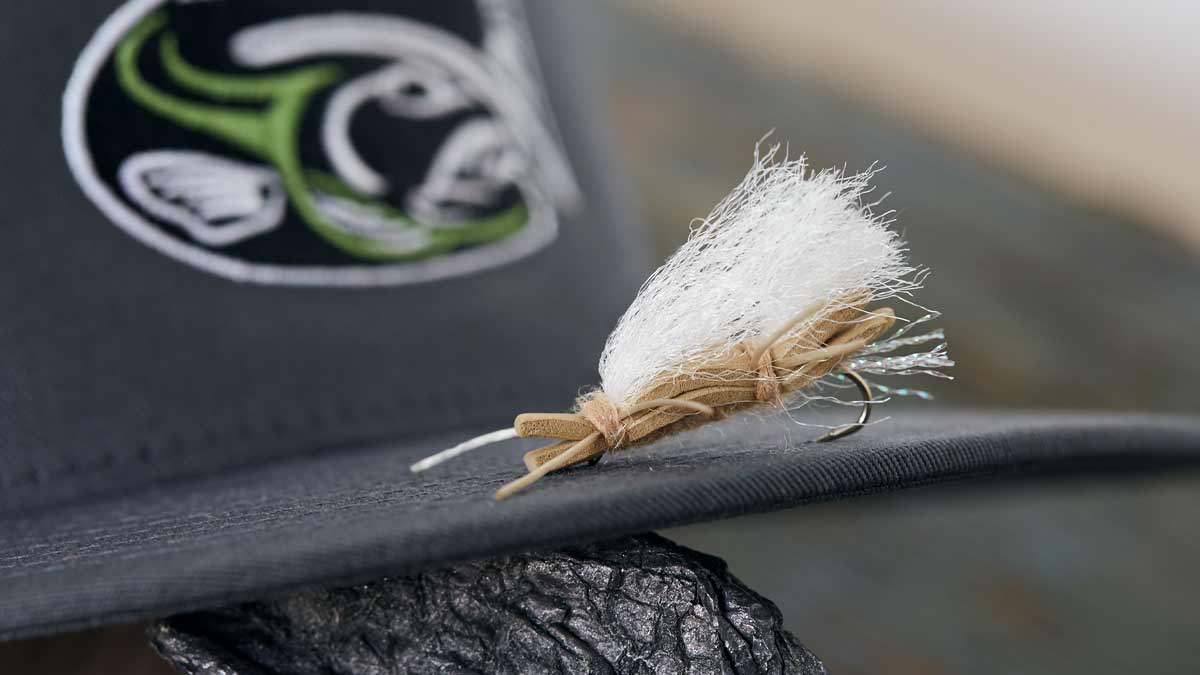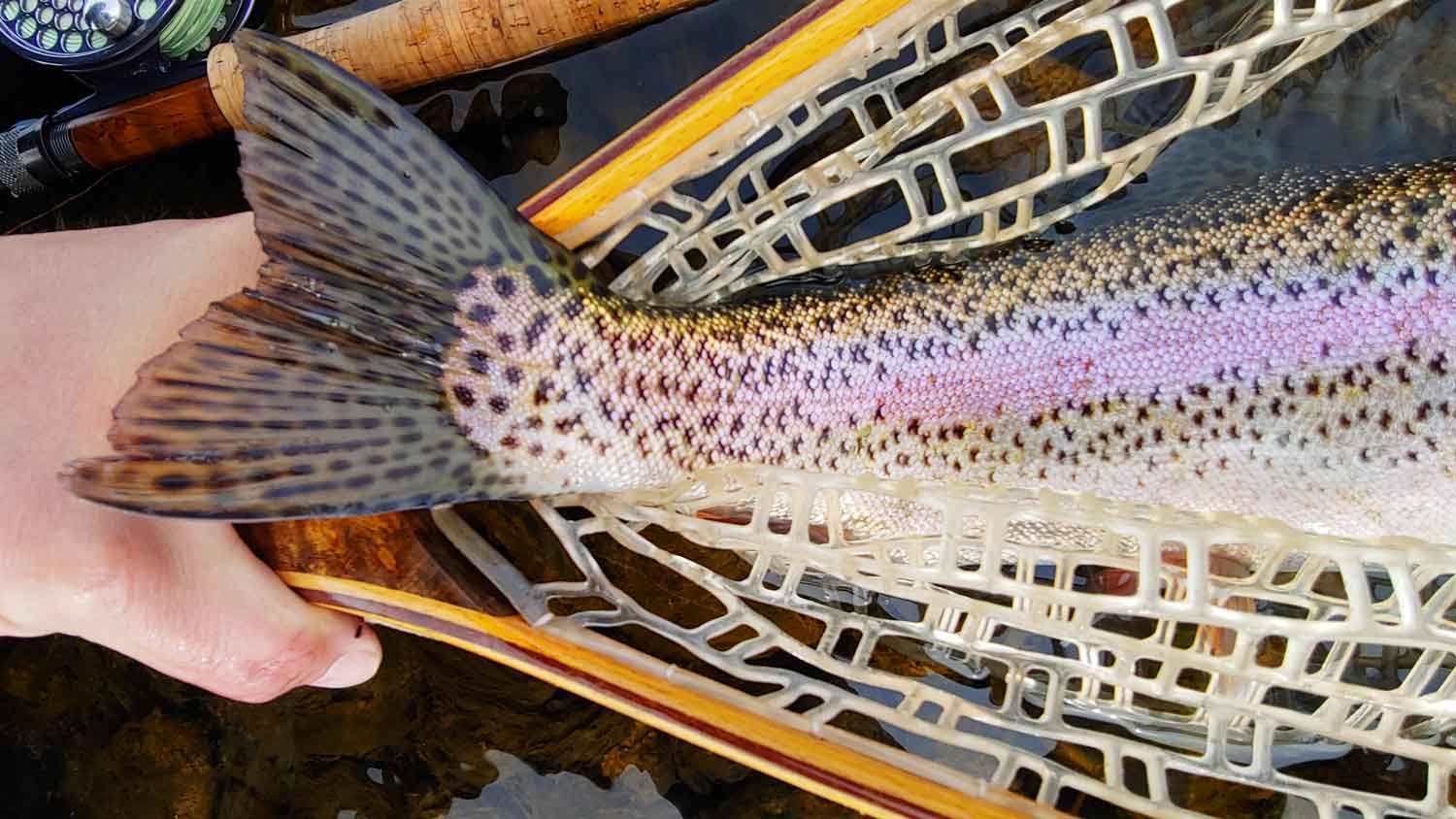
Which knots are used in fly fishing? How do I tie fly fishing knots? These are two of the fly fishing questions I get asked most often. Even my father-in-law has asked me—his biggest holdup with his fly fishing hobby was that he couldn’t remember which knot to use, or how to tie the knots. So I thought I would talk about the top six fly fishing knots that everyone should learn in order to become a better angler. Most of the time, you will only need two of these knots (the Double Surgeon’s Knot and the Improved Clinch Knot) because as soon as you get a few of them tied you will not need to tie them again until you’re changing out your fly line, which doesn’t happen that often.
These are the top 6 knots you should learn for fly fishing:
- Perfection Loop. This is technically not a knot, but I get asked a lot about how to connect the loop on most common fly lines and the loop on leaders, so I thought I would include it here.
- The Blood Knot. This is the knot you would use if you didn’t have a loop on the end of your line or if you were tinging on your own leader material that didn’t have a loop the end.
- The Double and Triple Surgeon’s Knot. This knot is used to connect the leader to the tippet material, or the tippet to the tippet.
- The Improved Clinch Knot. This is one of the two knots recommended to connect your tippet to the fly.
- The Non-Slip Loop Knot. This is the second knot recommended for adding more movement to your nymph and streamer presentation.
- The Arbor Knot. This is the knot used to tie your fly line to your reel. You’ll most likely only use this knot once if you’re adding your own line to your rod.
The below information and videos will give you step by step guidance on how to tie these knots and when to use them with your fly fishing kits.
How to connect your leader to your fly line using the pre-welded perfection loops
Most fly lines and leaders in the marketplace today come with welded loops on one end of the line for a connection to each other. To connect these two pieces of the line, you need to:
- Take the loop side of your fly line and feed it through the loop side of your leader.
- Take the access leader and feed it through the looped section of the fly line.
- Pull tight.
Watch this quick video for a further demonstration:
How to tie the Blood Knot
The Blood Knot is used for joining your fly line and your leader together if they do not come with a pre-welded loop. What makes this knot secure is that by wrapping it 5 times, it increases the strength of the knot. This knot will work with different diameters of the line, but it works best when they are close in size.
To connect these two pieces of fly line, start out by:
- Overlap ends of lines to be joined, making an X shape. Give yourself ample range to work with on both ends.
- Twist your first line around the other 5 times.
- Bring the end back between the two lines where you started your X.
- While holding the first section with your opposite hand, do the same process with the second line, wrapping in the opposite direction and making 5 new turns.
- Slowly pull lines in opposite directions. Turns will wrap and gather, and as they do, they will form the knot.
- Clip tag ends close to the knot for a smoother transition on the fly rod.
How to tie the Double Surgeon’s Knot and Triple Surgeon’s Knot
Two of the easiest knots to learn for fly fishing are the double and triple surgeon’s knots. These knots are excellent for joining two lines of equal or slightly unequal size. They’re typically used to combine your leader to your tippet or for combining larger-diameter tippet to smaller-diameter tippet when you’re extending or building out your leader. It’s one of the most natural knots because, in essence, it’s basically just a double overhand knot.
Because we can join two different sizes of line together, we can get the tippet size down to the appropriate diameter for the size of a fly that we are fishing. It’s typically used to join two pieces of monofilament line, but it also can be used to tie monofilament to fluorocarbon tippet as well.
To tie the Double Surgeons’ Knot:
- Place the two pieces of the line next to each other.
- With both lines in one hand, form a loop with enough extra line to easily tie two overhand knots.
- Take both ends of the line through the loop and then pull them through a second time.
- Properly wet the knot with saliva or lubricant such as chapstick and pull it tight.
- After the knot has been tightened down, set the knot by pulling on all four ends. This will ensure a good knot set.
- Trim the ends down.
PRO NOTE: If you give yourself enough extra end, you can build a nice multiple fly rig by using the end to add additional flies. This technique is used in the Drifthook Fly Fishing System. Learn more about it here.
To tie the Triple Surgeon’s Knot, all you need to do is pull the two lines through the loop a third time. Here are the steps.
To tie the Triple Surgeon’s Knot:
- Place the two pieces of the line next to each other.
- With both lines in one hand, form a loop with enough extra line to easily tie three overhand knots.
- Take both ends of the line through the loop and then pull them through a second time.
- Take both ends of the line through the loop and then pull them through a third time.
- Properly wet the knot with saliva or lubricant such as chapstick and pull it tight.
- After the knot has been tightened down, set the knot by pulling on all four ends. This will ensure a good knot set.
- Trim the ends down.
How to tie the Improved Clinch Knot
The Improved Clinch Knot is a common choice for tying your end fly or last fly to monofilament or fluorocarbon line. The Improved Clinch Knot is quick and easy to tie, and I have found it to be the most reliable of the knots that I tie. It can be challenging to tie in lines testing more significant than 20 pounds of breaking strength but is excellent for anything below that.
To tie the Improved Clinch Knot:
- Take the end of your tippet or leader and thread the end of it through the eye of the hook of the fly. Come back around and make 5 to 9 turns around extended line.
- Bring the end of the line back through the first loop formed behind the eye.
- Then take the end of the line through the big circle.
- Properly wet the knot with saliva or lubricant such as chapstick and pull on the tag end to tighten down the coils.
- Slide tight against the eye of the fly and clip tag end. I like to leave a little bit extra on the end as I feel if you clip it too tightly, you will have more breaks than if you give it some wiggle room.
How to tie a Non-Slip Loop Knot
The Non-Slip Loop Knot makes a non-slip loop at the end of your tippet or leader. This knot is fantastic at adding animation to your fly in the water, as it lets the line float in the eye of the fly. I typically use this on all of my nymph and streamer rigs because I find it so successful. Not only does it give animation, but the knot has high strength when you land into that MONSTER trout!
To tie the Non-Slip Loop Knot:
- Make an overhand knot in the line, but do not close the knot. Give yourself ample room to work as you can slide the size down as you continue the knot.
- Take the end of the line through the eye of the fly.
- Take the front and then pass it through the overhand knot that you just created.
- Wrap end of the line around 5 times.
- Feed the end back through overhand knot, entering the same side it exited.
- Properly wet the knot with saliva or lubricant such as chapstick and slowly pull on the tag end to cinch the wraps together.
- Finish by pulling the fly and the line in opposite directions to clinch the knot.
- Clip tag end. I like to leave a little bit extra on the end as I feel if you clip it too tightly, you will have more breaks than if you give it some wiggle room.
How to tie the Arbor Knot
The Arbor Knot is used to secure your fly fishing line to the seat of your fly reel. This is not intended to behold that MONSTER Trout when he takes all of your line and your backing, but instead, it is there to help you start the process of loading your spool with the backing. Sometimes it's better to lose an $80 line than it is to lose your entire rod and reel.
To tie the Arbor Knot:
- Take your fly line and wrap it once around the spool.
- Next, tie a single overhand knot around the standing fly line.
- Then tie a second overhand knot on the end about an inch from the first overhand knot.
- Pull the fly line tight to slide the first knot down to the spool and the second knot to engage against the first knot.
- Trim the excess.

About the Author
Matthew Bernhardt, a third-generation Coloradan, grew up at the forefront of the state’s fly-fishing revolution, enjoying time on the water side by side with experienced guides and lifelong anglers.
By combining his passion for fly-fishing with input from other experienced fly-fishers and guides and his fine arts degree from Colorado State University, Matthew spent five years carefully developing the Drifthook Fly Fishing System, built to help every angler catch more trout.
When he’s not spending time with his wonderful family, you’ll find him out on the water catching MONSTER trout, and he anxiously looks forward to the day when his kids are old enough to join him there.



